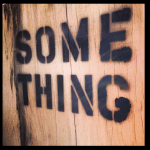In an interesting finding, an Indian origin researcher, Arava Leela Mohana Reddy, at Houston’s Rice University has found that plant extract from te plant Rubia tinctorum, can use turned into a cathode for lithium-ion batteries. This may be significant if this can be made commercially viable to fight the environmentally unfriendly impact of lithium-ion batteries that are in use today.
Researchers say a plant extract can be turned into a highly effective, natural cathode for lithium-ion batteries. The madder plant, Rubia tinctorum, is a good source of purpurin, an organic dye that has been used on fabrics since ancient times.
Arava Leela Mohana Reddy, a research scientist at Rice University, and colleagues came across purpurin while testing a number of organic molecules for their ability to electrochemically interact with lithium and found purpurin most amenable to binding lithium ions.
With the addition of 20 percent carbon to add conductivity, the team built a half-battery cell with a capacity of 90 milliamp hours per gram after 50 charge/discharge cycles. The cathodes can be made at room temperature, Reddy says.
The discovery is the subject of a paper in Nature’s open-access journal Scientific Reports.
Not only is the technology for using the purpurin from plants simple, but it can be made available from agriculture waste as well.
Reddy says the chemistry involved in using purpurin to create a cathode “is really simple.”
He suggests agricultural waste may be a source of purpurin, as may other suitable molecules, which makes the process even more economical.
Innovation in the battery space is needed to satisfy future demands and counter environmental issues like waste management, “and hence we are quite fascinated by the ability to develop alternative electrode technologies to replace conventional inorganic materials in lithium-ion batteries,” says Pulickel Ajayan, a professor of mechanical engineering, materials science, and chemistry.
Photo Credit: chemazgz/Flickr – It is the Madder, a climbing plant, has been used since ancient times to create dye for fabrics.





















